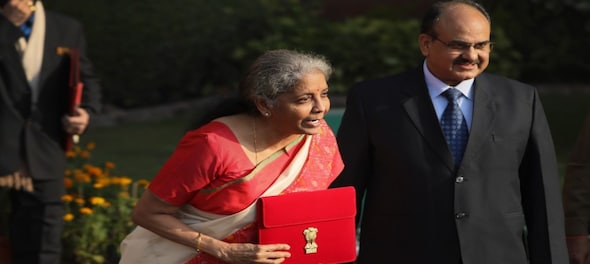
‘Make in India — Make for World’ is the mantra Prime Minister Narendra Modi gave in his 2020 independence day speech. For this vision to be successful, over 6.3 crore Micro, Small, and Medium Enterprises (MSMEs) must be taken on board. The third wave of the pandemic has heightened economic uncertainties and smaller enterprises face business threats that are destabilising their supply chains and even the mere existence of many. Encouraging an innovation-led ecosystem that incentivises technological interventions over the medium term could make small businesses atmanirbhar and help them make more for India and the World.
Budget 2022-23 comes at a challenging time yet again, as a fresh wave of Covid-19 threatens to stall a nascent recovery, especially among the critical micro, small, and medium enterprises (MSME). In addition to an urgent intervention to address the credit and liquidity challenges, budgetary allocation will have to provide for wider infrastructure and handholding support to the MSME sector. The upcoming budget should foster MSME policies to promote innovation and efficiency among smaller enterprises, driving higher domestic production and improving competitiveness for exports.
Initially at 200 percent, the Finance Act, 2016 provided for the phasing out of weighted deduction for research and development expenditure to 100 percent by 2021. However, evidence suggests MSMEs may have responded more to such measures compared to large firms. Reinstating a 200 percent weighted deduction for research and development expenditure for MSMEs can encourage innovation. Similarly, the reintroduction of the credit-linked capital subsidy scheme for technological up-gradation will encourage technology adoption among MSMEs.
In a rapidly changing technological landscape, MSMEs require support in filing and accessing patents and designing intellectual property rights (IPR). Budget announcements could include a) financial incentive equivalent to ten percent of the transaction value to MSMEs for selling patents and design IPRs to domestic entities, b) fund for subsidising the purchase of patent & IPR licenses (domestic or international), provided it is used exclusively for domestic production, and c) acceptance of patent and design IPRs as collateral by lending institutions. The Office of Controller General of Patents, Design & Trade Marks could issue a minimum valuation mechanism for these IPR. Such measures will not only encourage MSMEs to innovate but also to look at patents and design IPRs as marketable assets.
The budget could strengthen Make in India by providing support through policies that encourage domestic production and help MSMEs. The budget should allocate the much-awaited government corpus of Rs 10,000 crore to operationalise the MSME fund of funds for MSMEs announced under the Atmanirbhar Bharat scheme and push for Rs 40,000 crores from private equity/venture capital. The scheme would provide equity support along with helping MSMEs to get listed on the main board of stock exchanges.
Make in India echoes the support of production-linked incentives for MSMEs. The budget should consider expanding the PLI scheme to labor-intensive sectors, where MSMEs play a significant role. Leather and footwear manufacturing, furniture, natural textiles, and readymade garments, as well as toys, are some of the sectors where a PLI scheme will help domestic production and generate significant employment opportunities.
The rapid increase in input costs has impacted MSME production amid volatile supply issues. While reducing import duties on raw materials like steel could provide immediate support, indexing raw material prices in longer-term government procurement contracts could provide the necessary cushion against inflation and uncertainty in supply chains. To ease credit and liquidity concerns, the emergency credit line guarantee scheme (ECLGS) should be expanded further to ensure outreach among smaller enterprises within MSMEs.
The emerging markets have leaned on deficit financing to provide stimulus at a time when there was little activity and the pandemic was at its peak. Now, with the effects of the pandemic fading in developed economies and the realignment of global supply chains, this may be a unique opportunity to support consumption and production to restart a virtuous cycle of growth and investment.
The MSMEs need more support to improve production and exports to attain Atmanirbharta or self-reliance in line with the prime minister’s vision. The government, in the past, has shown an intent to strengthen the MSME sector, by substantially increasing budgetary allocations and introducing multiple reforms like ECLGS, subordinated debt, and revised definitions among others. Given the unusual circumstances due to the pandemic, and a never-before opportunity towards strengthening the sector as the economy opens up, the MSME sector has high expectations from the finance minister. It is now to be seen how much the government actions embody its own leader’s mantra.
—Alok Gupta is a senior fellow (non-resident) for the Wadhwani Chair in US-India Policy Studies at the Center for Strategic and International Studies (CSIS) at Washington DC. Alok is also the director of technology and policy at the Wadhwani Foundation in New Delhi.
Mayank K. Jha is a senior consultant for policy at the Wadhwani Foundation in India. Views expressed are personal
(Edited by : Ajay Vaishnav)
Check out our in-depth Market Coverage, Business News & get real-time Stock Market Updates on CNBC-TV18. Also, Watch our channels CNBC-TV18, CNBC Awaaz and CNBC Bajar Live on-the-go!


Delhi, Indore, Surat and Banswara — why these are the most challenging domains for Congress internally
May 4, 2024 1:53 PM
Congress nominee from Puri Lok Sabha seat withdraws, citing no funds from party
May 4, 2024 12:00 PM
Lok Sabha Polls '24 | Rahul Gandhi in Rae Bareli, why not Amethi
May 4, 2024 9:43 AM

